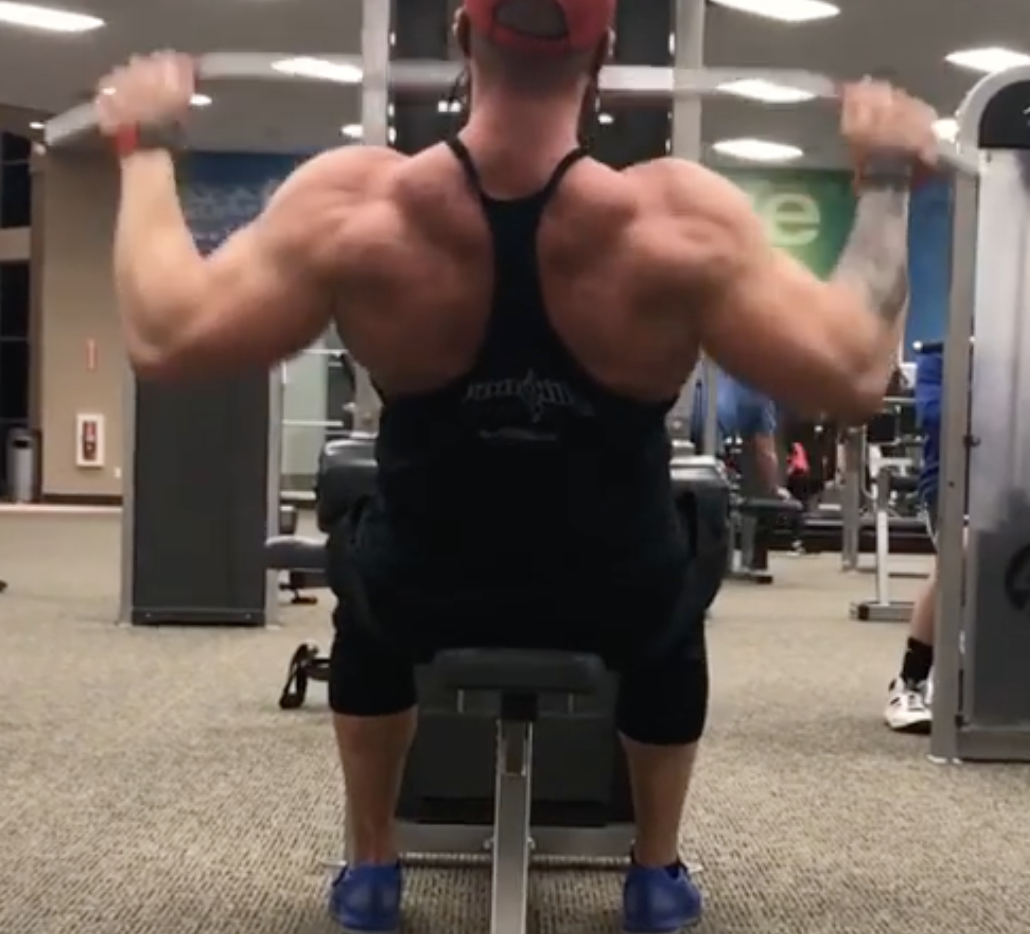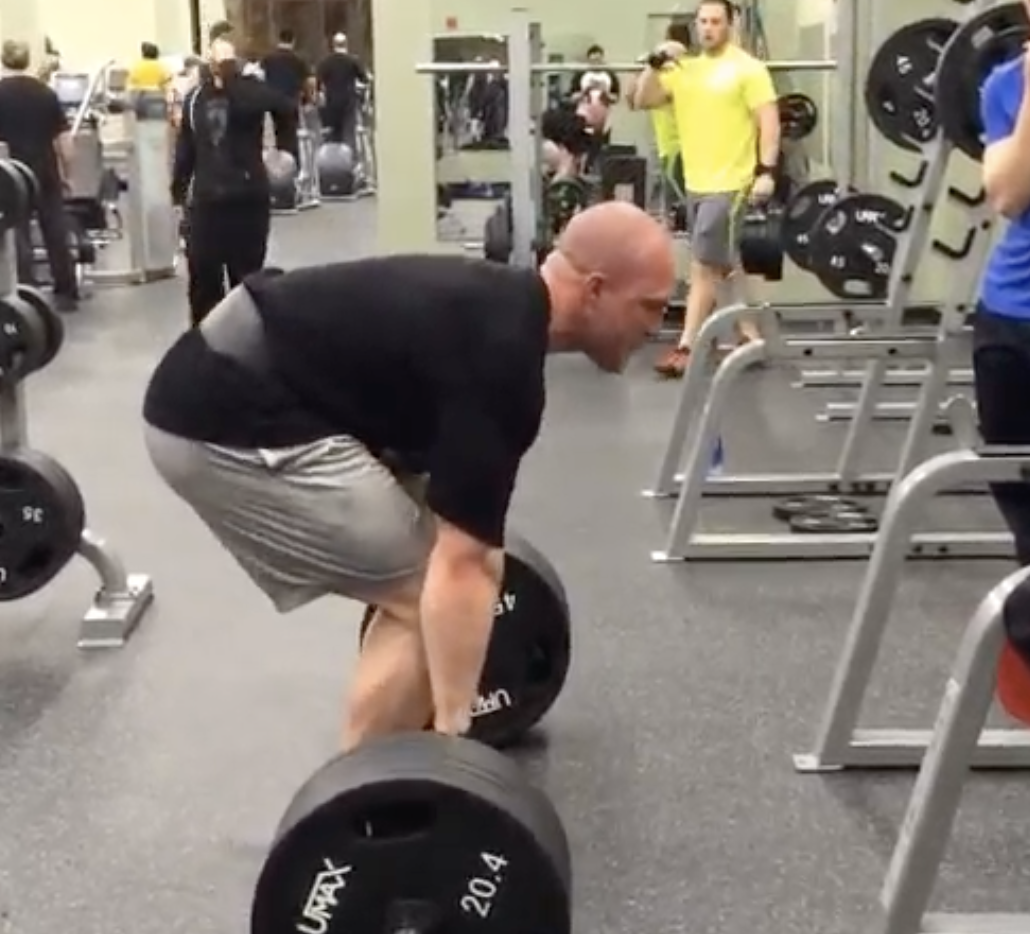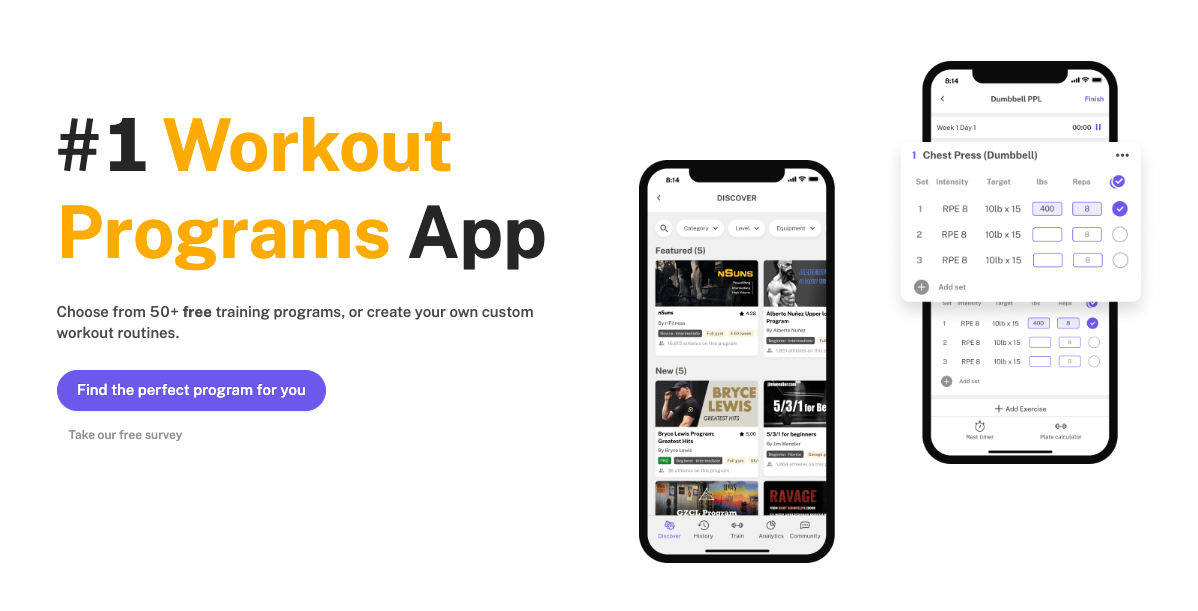A Complete Guide to the Push Pull Legs/Upper Lower Workout Split
Written by the Boostcamp staff
Understanding the push/pull/legs/upper/lower Routine
When it comes to finding a training routine, two of the most popular workout splits that people utilize are the upper lower split, and the push pull legs split. Now, the question that many will ask is which one is better? While these workout splits have their pros and cons on their own, what if you could combine these two splits, into a nice five day training program. Well, you can do just that, and that is the upper lower/push pull legs routine.
The push/pull/legs/upper/lower workout split is a type of training routine that divides your body parts into specific training days to maximize muscle groups' training time. This type of split allows you to train each particular muscle group with adequate frequency and variations in intensity and volume. For example, you can include both barbell and dumbbell exercises, both compounds and isolation exercises, that help build size and strength. This routine is popular among bodybuilders and late beginners due to its effectiveness in targeting specific body parts, while also helping to build strength.
Breaking Down Each Workout Day
Upper Body Workout
When engaging in upper body training, individuals typically perform exercises like the bench press and overhead press to target specific muscle groups, including the chest, back, shoulders, and arms. This type of workout routine plays a crucial role in building both strength and muscle mass, making it an essential part of any comprehensive fitness regimen.
Lower Body Workouts
When focusing on the lower body workout, it's important to incorporate exercises such as squats, lunges, and leg press to target the quads, hamstrings, glutes, and calves. These exercises not only contribute to overall strength and muscle growth but also enhance core strength and stability. By targeting these muscle groups, individuals can build a strong foundation for their entire body, enabling them to handle heavier weights and perform better in various activities.
Push Workouts
When focusing on the push day workout routine, it's essential to target the major muscle groups that are activated during pushing movements, such as the chest, shoulders, and triceps. Effective push exercises not only stimulate muscle growth but also contribute to overall upper body development, making it an ideal choice for bodybuilders and late beginners looking to train these particular muscle groups with a more focused approach. Including barbell and dumbbell exercises can effectively target the chest, shoulders, and triceps.
Pull Workouts
When it comes to the pull day workout, it focuses on engaging key muscle groups including the back, biceps, rear delts, and in some cases the traps. Essential pull exercises such as pull-ups, different variations of rows, and bicep curls are integral components of the pull day workout routine. By incorporating these exercises, individuals can effectively build a well-defined and robust upper body. It is crucial to tailor the training time and reps to one's specific goals and gradually progress to heavier weights for optimal results.
Leg Workouts
When it comes to the execution of a leg workout, it's essential to focus on exercises targeting all aspects of the legs (quads, hamstrings, glutes, and calves). This comprehensive approach contributes to overall muscle development and strength, enhancing lower body muscle mass and endurance. Incorporating a variety of movements that target different muscle groups within the legs ensures a well-rounded training routine. By incorporating exercises such as squats, lunges, deadlifts, and calf raises, individuals can effectively work on specific muscle groups while also improving overall lower body strength and stability.
The Benefits of the Push/Pull/Legs/Upper/Lower Workout Schedule

The push/pull/legs/upper/lower workout schedule offers a versatile approach, targeting each body part twice a week, and allowing for two days of rest and recovery. This type of split allows for a balanced distribution of training time across different muscle groups, enhancing muscle growth and strength development.
With many different variations , it caters to both late beginners and bodybuilders. Incorporating a variety of compound and isolation exercises enables individuals to lift heavier weights and perform optimal reps for overall development. This split is particularly beneficial for targeting specific muscle groups and growing them bigger and stronger, making it suitable for beginners and experienced individuals alike.
The Impact of the PPL/UL Split on Muscle Growth
The push/pull/legs/upper/lower split promotes muscle hypertrophy and development, aiding in muscle recovery and adaptation for increased muscle mass. This workout schedule effectively stimulates muscle growth across all major muscle groups, providing a well-rounded approach to muscle development. By incorporating a variety of exercises that target specific muscle groups, the push/pull/legs split offers an effective strategy for overall muscle growth and strength enhancement.
The Effect on Strength Development
Enhancing strength and power across exercises, this workout routine fosters overall stamina and fitness improvement. It effectively facilitates strength development for all muscle groups, contributing to a well-rounded approach to fitness. The push pull legs upper lower split plays a pivotal role in aiding strength development through its strategic approach to training different body parts on specific days. By incorporating heavier weights and focusing on reps, individuals can experience significant improvements in their strength and power. This type of training time under the ppl split can lead to substantial growth in particular muscle groups.
The Reason Bodybuilders Prefer 5-Day Workout Schedules
The PPL/UL split is a 5-day split, and bodybuilders favor 5-day workout schedules due to superior recovery periods between training each body part, enhancing muscle growth and strength development. These schedules enable high training frequency for each body part, allowing bodybuilders to hit a particular muscle group with heavier weights and more reps. The push/pull/legs/upper/lower split can easily be used by bodybuilders, as it provides excellent variation in workouts, targeting different body parts on specific days to ensure effective training time and optimal recovery.
Improved Recovery Time
Balanced rest periods aid muscle recovery and growth, minimizing overtraining and injury risks. That being said, the push/pull/legs/upper/lower split allows for 2 rest days, which are optimal for recovering from each training session. Optimized recovery ensures consistent training without burnout while allowing muscles to adapt to stressors. This improved recovery maintains training intensity and performance, crucial for effective progress in the push-pull-legs-upper-lower split.
Enhanced Training Intensity
Increased training intensity drives higher recruitment of muscles, promoting growth and progressive overload for muscle development. This optimization enhances workout efficiency, leading to greater metabolic and cardiovascular benefits. Elevating training intensity also accelerates gains in strength and endurance. By using heavier weights and increasing reps, bodybuilders can achieve optimal training time, especially when focusing on specific body parts in a push-pull legs split. This approach is essential for late beginners or those transitioning from a traditional bro split to a push-pull-legs (PPL) split, which targets particular muscle groups on each day of the 5-day workout routine.
Implementing the Push/Pull/Legs/Upper/Lower Routine

When implementing the push/pull/legs/upper/lower routine, it's important to focus on warm-up techniques for maximum efficiency and deciding rest periods between sets. Each body part should be adequately trained, and the training time should be optimized for each day's workout routine.
When it comes to the individual muscle groups, you will be training each one twice per week. That being said, you could have one day focusing on hypertrophy and the other day focusing on strength. For example, on the push/pull/legs days of the training split you could focus on heavy compound movements, then on the upper/lower days you could focus on more accessory movements with higher reps. Don’t forget to incorporate progressive overload as well, as utilizing heavier weights and increasing reps gradually, particularly for barbell and dumbbell exercises, is crucial for progression and optimal development.
Warm Up Techniques
Preparing for a workout involves more than just jumping into your exercise routine. Effective warm-up techniques are essential for getting your muscles, joints, and cardiovascular system ready for action. By incorporating pre-workout warm-ups, you can increase muscle elasticity, minimizing the risk of injury while maximizing training efficiency and performance. Dynamic warm-up exercises play a vital role in enhancing movement patterns and neuromuscular coordination, ensuring that your body is primed for the upcoming training session. Tailoring your warm-up routine to suit your specific needs ensures optimal muscle activation and overall readiness for your workout.
Rest Periods Between Sets
When determining rest periods between sets, it's essential to strike a balance that promotes muscle recovery and growth. Customizing these intervals can optimize muscle endurance and strength performance, supporting hypertrophy and overall training effectiveness. By adjusting and tailoring rest periods, you can maintain training intensity during workout sessions, fostering sustained performance and muscle adaptation. This approach ensures that your rest periods align with the specific needs of your body, enhancing the outcome of your workouts.
Alternative 5-Day Workout Routines
When it comes to considering alternative 5-day workout routines, it's essential for everyone from late beginners to seasoned bodybuilders to explore the PPL split and UL split. These types of splits allow for a focus on particular muscle groups, offering a change from the traditional bro split. By integrating pull day exercises with push and legs, individuals can benefit from higher training frequency and training time, leading to optimal results in muscle development and strength.
The Push/Pull/Legs Split Alternative
Looking for a balanced training approach that targets multiple muscle groups? The push/pull/legs split alternative might be the perfect fit for your workout routine. With its adaptable schedules and diverse training options, this alternative caters to individual preferences and training needs. Whether you're a beginner or at an advanced level, this type of split accommodates various program structures and goals. It's a comprehensive approach to training particular muscle groups and can be tailored to include pull exercises, barbell work, or even traditional bro split workouts. Embrace a varied and effective training time with the push/pull/legs split alternative.
The Upper/Lower Split Alternative
For those seeking a balanced training approach, the Upper/Lower split is an effective alternative. This routine involves targeting major muscle groups in each workout by focusing on upper body muscles in one session and lower body muscles in another. The split provides ample recovery time for muscle growth and repair, allowing for higher training frequency and promoting muscle mass gains. As a result, it has become a popular choice among lifters aiming for well-rounded training sessions.
The Role of Cardio in a PPL/UL Schedule
Cardio exercises are essential for overall fitness and conditioning, complementing weight training perfectly. They aid in recovery and boost endurance for weight training, supporting heart health and muscle recovery. By balancing cardio with weight training, individuals can effectively manage their body composition and weight. Moreover, cardio activities can be customized to align with specific training goals and preferences, making them a valuable addition to any 5-day workout routine.
Being that the PPL/UL routine allows for 2 days off, you could make those both “active rest days” and incorporate some light cardio. You also could incorporate cardio after your training sessions a few days a week.
Balancing Cardio and Weight Training
Optimizing overall fitness and performance involves integrating cardio and weight training. This balance promotes cardiovascular health and muscle strength, targeting various movement patterns for holistic fitness. Customizing both types of training to individual needs is essential. Additionally, prioritizing recovery time between cardio and weight training sessions is crucial for maximizing results and preventing overtraining. By striking the right balance and customization, individuals can achieve their fitness goals effectively and sustainably.
Are There Any Drawbacks to a 5-Day PPL/UL Workout Schedule?

Considering a 5-day push/pull/legs workout schedule? It's important to be aware of potential drawbacks. These include the higher time and commitment required, the need for careful management of recovery time to avoid overtraining, balancing rest days to prevent burnout, sustaining intensity, and personalizing the routine to prevent fatigue.
Where to Find PPL/UL Workouts
When it comes to finding some great push/pull/legs/upper/lower programs, you would want to find a program that caters to your needs and guides you in the right direction, making sure that you are making the most gains. If you are looking to stay on track and continue with linear progression, then finding a good workout program is the key. Where do you look for a good workout program? Check out the Boostcamp App for some great programs.
Boostcamp is home to over 50 FREE workout programs that consist of strength, hypertrophy, or functional fitness, or both. However, with Boostcamp, you don’t have to just follow a pre-written program, you also can create your own program as well, and track your progress to make sure you are on the right track. That being said, when you are looking to incorporate some arm training to further your powerlifting progress, then check out Boostcamp.
Conclusion
To sum it up, the push/pull/legs/upper/lower workout schedule offers a well-rounded approach to training, targeting different muscle groups and allowing for optimal recovery. With its focus on compound movements and progressive overload, this routine can lead to significant gains in muscle growth and strength development. Bodybuilders often prefer this 5-day workout schedule due to its ability to provide ample recovery time and enhance training intensity. When implementing this routine, make sure to incorporate proper warm-up techniques and track your progress for optimal growth. Additionally, don't forget to find the right balance between cardio and weight training to support your overall fitness goals. While there may be some drawbacks to a 5-day workout schedule, the benefits it offers in terms of muscle growth and strength make it a popular choice among fitness enthusiasts. So why not give it a try and see the results for yourself?
Boostcamp has plenty of free programs, so be sure to check them out and follow Boostcamp on Instagram and subscribe on YouTube!

Images courtesy of Instagram (brettasbury)

